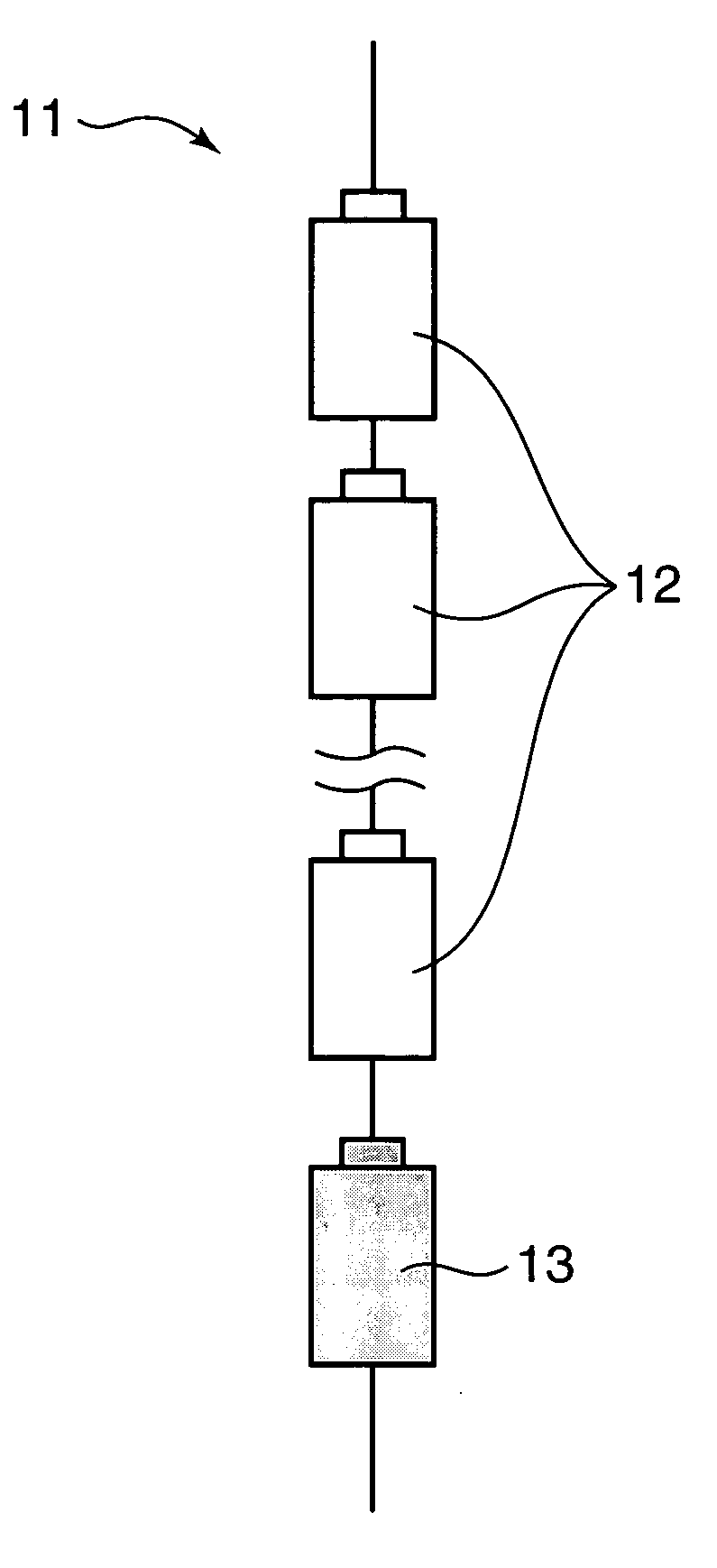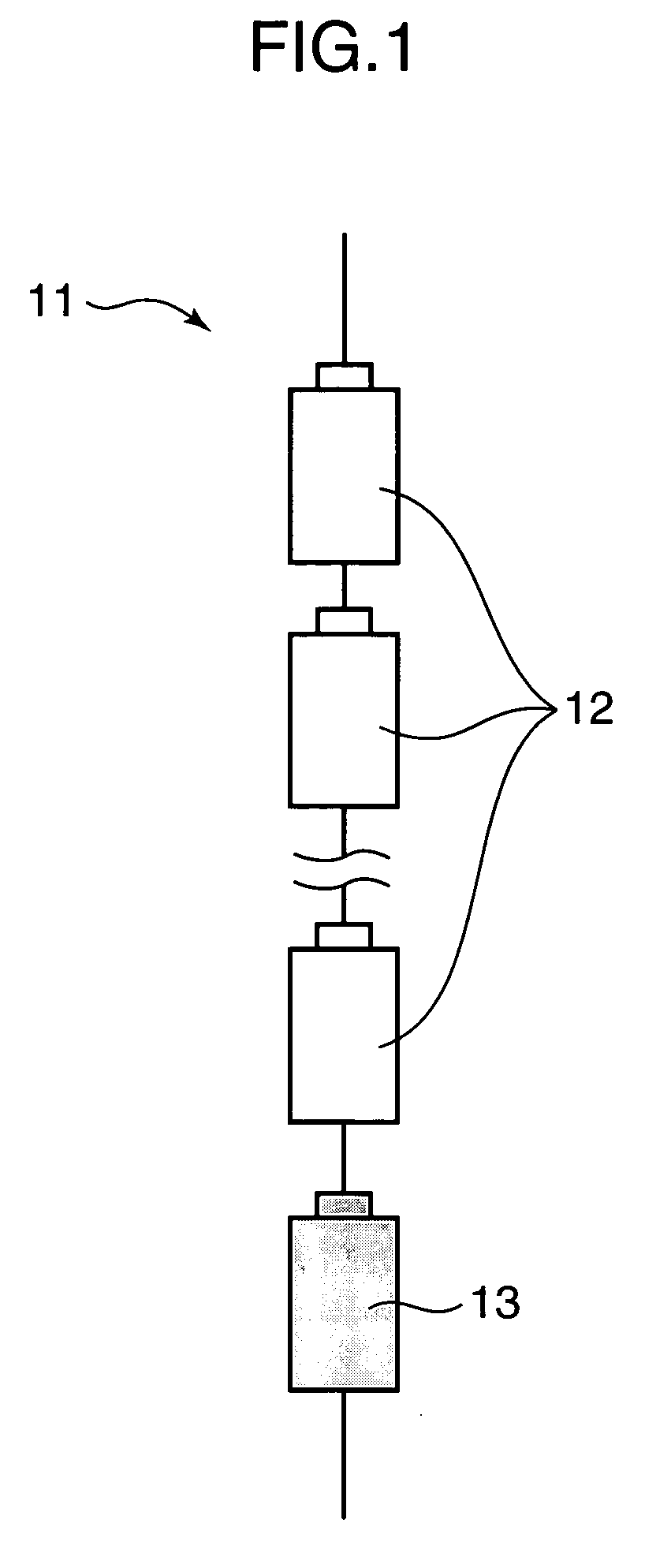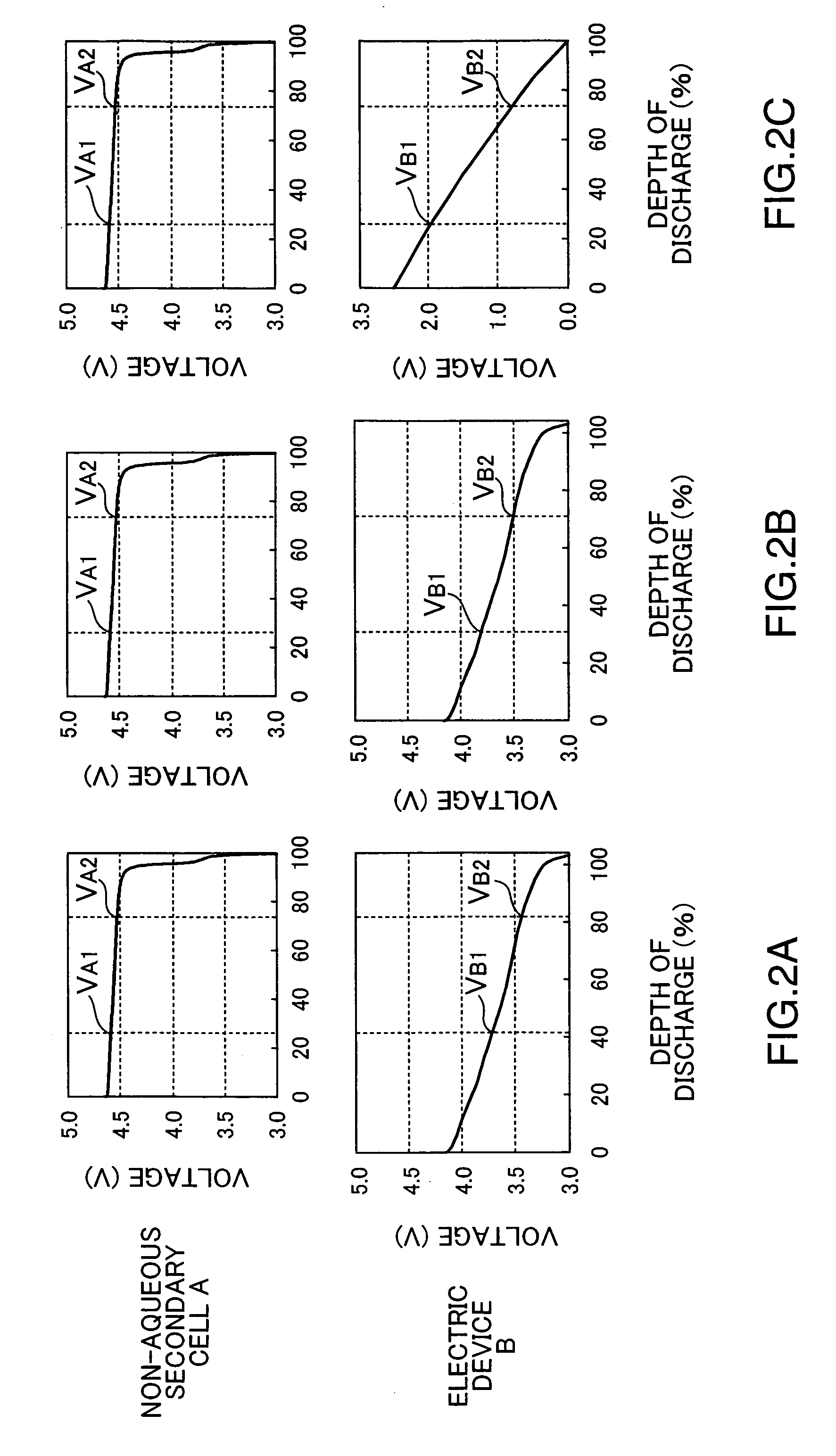Assembled battery, power-supply system and production method of assembled battery
a technology of assembled batteries and power supply systems, which is applied in the direction of cell components, electrochemical generators, transportation and packaging, etc., can solve the problems of large fluctuation of power, unsuitable for stabilized power supply, and difficult to determine the depth of charge and discharge from battery voltage or internal resistance, so as to prevent overcharge and overdischarge effectively, high power, and complicated apparatus
- Summary
- Abstract
- Description
- Claims
- Application Information
AI Technical Summary
Benefits of technology
Problems solved by technology
Method used
Image
Examples
embodiment 1
[0077]In the present embodiment, an assembled battery in combination of lithium-ion secondary cells as the non-aqueous secondary cells A with a similar lithium-ion secondary cell as the electric device B was studied.
[Preparation of Cell]
(Lithium-Ion Secondary Cell 1: L-1)
[0078]100 parts by mass of LiNi0.5Mn1.5O4 as the positive-electrode active material, 2.5 parts by mass of acetylene black as a conductive agent, and 4 parts by mass of polyvinylidene fluoride (PVDF) as a binder were blended in a dispersion medium, to yield a positive electrode slurry. The slurry was coated, dried, and rolled on both faces of a current collector, an aluminum foil having a thickness of 15 μm, and the resulting film was cut into a piece of a particular size, to give a positive electrode plate.
[0079]Separately, 100 parts by mass of graphite as the negative-electrode active material and 6 parts by mass of PVDF as a binder were blended in a dispersion medium, to yield a negative electrode slurry. The slur...
embodiment 2
[0100]In the present embodiment, an assembled battery in combination of lithium-ion secondary cells as the non-aqueous secondary cells A with an electric double-layer capacitor as the electric device B was studied.
[Preparation of Cell]
(Capacitor 1: C-1)
[0101]An activated carbon-coated aluminum foil was used as the positive and negative electrodes, and the foils were wound spirally via a separator being interposed between both electrodes facing each other, to give an element. The element was placed in a case and impregnated with a non-aqueous electrolyte containing an electrolyte salt dissolved in a solvent, to give a capacitor 1 (C-1).
[0102]The capacitor thus prepared had a capacity of 1,000 mAh in a cut-off voltage of charge of 2.5 V and in a cut-off voltage of discharge of 0 V at a current of 0.2 C.
(Capacitor 2: C-2)
[0103]A capacitor 2 (C-2) was prepared in a similar manner to C-1, except that positive and negative electrodes larger in electrode area were used to make the element ...
embodiment 3
[0110]In the present embodiment, an assembled battery in combination of lithium-ion secondary cells as the non-aqueous secondary cells A with the same kind of lithium-ion secondary cell as the electric device D was studied.
[Preparation of Cell]
(Lithium-Ion Secondary Cell 5: L-5)
[0111]100 parts by mass of LiFePO4 as a positive-electrode active material, 10 parts by mass of acetylene black as a conductive agent, 4 parts by mass of polyvinylidene fluoride (PVDF) as a binder were blended in a dispersion medium, to give a positive-electrode slurry. The slurry was coated, dried, and rolled on both faces of a current collector, an aluminum foil having a thickness of 15 μm, and the resulting film was cut into a piece of a particular size, to give a positive electrode plate. Because the electron resistance of LiFePO4 is low, the active material having a smaller particle diameter of about 100 nm was used.
[0112]Separately, 100 parts by mass of graphite as a negative-electrode active material a...
PUM
| Property | Measurement | Unit |
|---|---|---|
| voltage | aaaaa | aaaaa |
| voltage | aaaaa | aaaaa |
| voltage | aaaaa | aaaaa |
Abstract
Description
Claims
Application Information
 Login to View More
Login to View More - R&D
- Intellectual Property
- Life Sciences
- Materials
- Tech Scout
- Unparalleled Data Quality
- Higher Quality Content
- 60% Fewer Hallucinations
Browse by: Latest US Patents, China's latest patents, Technical Efficacy Thesaurus, Application Domain, Technology Topic, Popular Technical Reports.
© 2025 PatSnap. All rights reserved.Legal|Privacy policy|Modern Slavery Act Transparency Statement|Sitemap|About US| Contact US: help@patsnap.com



